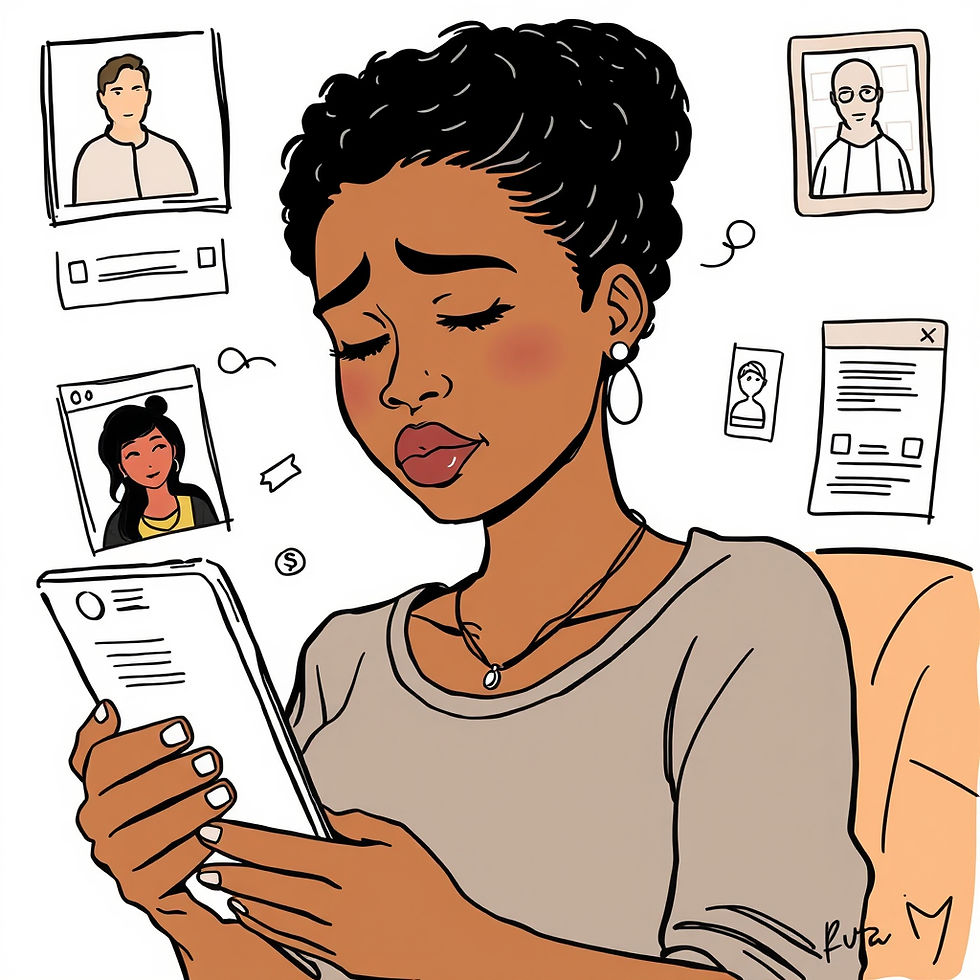The Role of Social Media in Triggering Trauma Responses
- Maria Diaz

- Aug 14
- 4 min read
By Maria Diaz, LMHC-D, LPC, EMDR Certified Therapist

In a world where we carry tiny screens in our pockets and check them dozens of times a day, social media has become woven into the fabric of daily life. It’s where we connect, express ourselves, share milestones, and even seek comfort. But for many, it’s also where old wounds quietly resurface—and where trauma responses can get unexpectedly triggered.
Whether it’s doomscrolling through a newsfeed, reading a heated comment thread, or seeing a photo that jolts your nervous system, the digital world has a very real impact on our emotional and physiological state. Social media doesn’t just affect our mood—it can activate deeply held trauma responses that we might not even realize are being triggered.
So, how exactly does this happen?
Trauma in the Nervous System, Not Just the Past
Before diving into the role of social media, it helps to understand a basic truth about trauma: it’s not just about what happened to us. It’s about how our bodies and nervous systems responded to what happened—and how those responses might still be “on” long after the event.
Trauma lives in patterns of survival: fight, flight, freeze, and fawn. When triggered, our systems may launch into hypervigilance, emotional flooding, shutdown, or people-pleasing—whether or not there’s an immediate threat.
Now imagine scrolling through Instagram or TikTok. Suddenly you see a post that reminds you of a painful relationship, or an overwhelming news story appears without warning. Your body doesn’t know you’re just holding a phone. To your nervous system, that memory or image may feel just as real and dangerous as it did the first time.
Subtle Yet Powerful Triggers
Social media can be full of subtle landmines for trauma survivors. What might seem like harmless content to some can be deeply activating to others, depending on personal history and sensitivity.
Here are a few common ways social media can stir trauma responses:
1. Unfiltered Exposure to Distressing Content
Graphic news, images of violence, or stories of injustice can bring on a sense of helplessness or hyperarousal. The constant flow of distressing headlines can wear down our emotional resilience, especially for those with a history of trauma.
2. Comparison and Shame
Endless highlight reels of other people’s lives can reinforce feelings of inadequacy, self-doubt, or worthlessness. For someone with a trauma history involving rejection, neglect, or emotional abuse, this comparison trap can be particularly harmful.
3. Conflict and Online Hostility
Arguments, trolling, or witnessing aggressive online behavior can re-activate old wounds around safety, boundaries, or powerlessness—especially for those who’ve experienced emotional or verbal abuse.
4. Unexpected Contact
Seeing a post from, or about, someone from a traumatic past (such as an ex-partner, abuser, or estranged family member) can bring up intense emotional and somatic reactions, even if contact is unintentional.
5. Lack of Closure
Social media keeps connections semi-open. We can view people’s lives long after we’ve tried to move on. For survivors trying to heal or set boundaries, this “digital proximity” can make it harder to fully let go.
Recognizing a Trauma Response
Not every negative reaction is a trauma response—but if you notice strong physical, emotional, or behavioral shifts after being online, it’s worth paying attention. Some signs might include:
Feeling suddenly anxious, numb, or on edge
Rapid heartbeat or shallow breathing
Feeling dissociated or spacey
Intense sadness, rage, or shame
Trouble sleeping or concentrating
Compulsive scrolling even while feeling bad



Comments